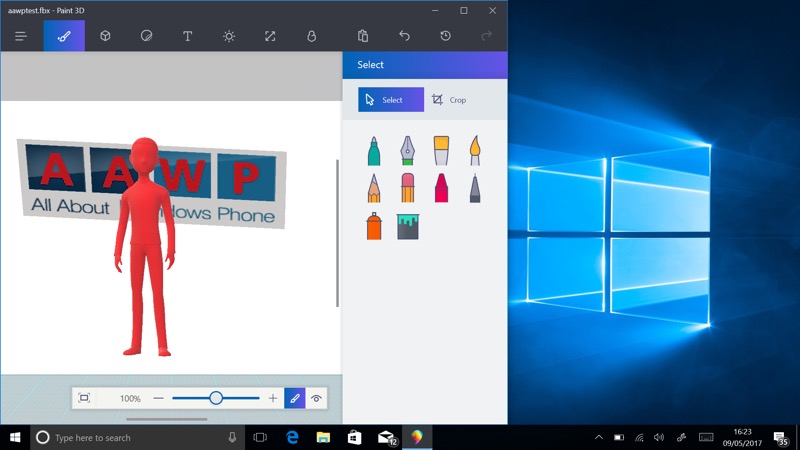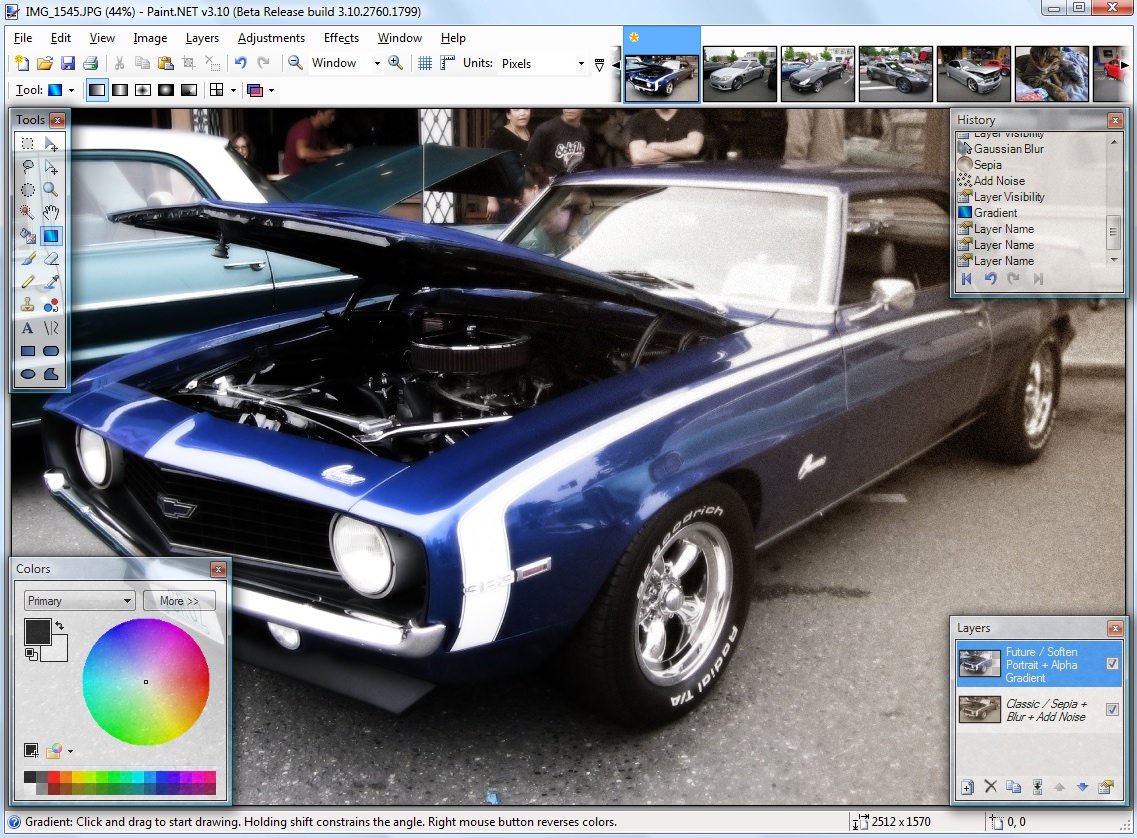Central to the story are two things: 3D itself and Paint. Let's take the latter first:
The story so far... a rough timeline (spanning - roughly - 2016-2021):
- Paint has been in Windows for decades, a basic bitmap editor and cropping tool that's universally loved - mainly because it's on every single Windows computer without anyone having to go download something new. It often would save the day.
- Microsoft announces that Paint is to be deprecated and dropped from Windows builds in favour of the new 'Paint 3D', a completely rewritten tool with totally different UI and aims.
- Everyone and their dog complains and Microsoft relents a little, announcing that (classic) Paint will still be available in the Store if anyone wants it.
- With Paint 3D not exactly setting the world on fire, Microsoft relents further, announcing that Paint will be kept in all Windows builds.
- Paint 3D is the one that gets booted to the Store in the end (here it is) and will be the application that eventually stops shipping with Windows.
Who could have seen that coming? Well, actually, nearly everyone. 3D was a Microsoft obsession four years ago. We had Hololens launched, also running Windows 10 and UWP applications, but with a virtual interface and every developer was invited to the party. 3D objects in a pseudo-3D space, we'd all be sitting in homes and offices with goggles on, interacting with applications and services using controllers, gestures, and head and eye movements. Sounds idyllic?

Actually no, the idea is completely ridiculous for the man in the street. Or in the office. Or even in the home. Augmented or Virtual Reality (AR or VR), 3D interfaces, and so on, are very cool technology and demo well. But out in the real world, they're restricted to niche uses in industry or the medical profession - and even here I get the feeling they're still just demos, in effect. Yes, there are VR uses in gaming, but that's a solitary activity and also rather niche in the mainstream.
But in the meantime, Microsoft had placed a big bet on 3D (along with AI and Ink, both of which fared rather better), including ways for everyday folk to start playing with 3D objects rather than 'flat' images, as done since the dawn of computing. I applaud the ambition and we even demo-ed Paint 3D under Windows 10 Mobile on a Lumia, plus reported on an online tutorial for the interface. This being back in the day when Microsoft was still maintaining and updating Windows 10 Mobile, we even had a View 3D application shipped with the mobile OS - I demoed it on both Lumia and the Surface Go.

The trouble was that few people were interested in 3D. Outside of the few links here and verifying that the applications worked, across all my outlets and IT projects, I didn't need to create a single '3D object' in four years. And neither did 99.9% of other regular Windows users. It's a technology that has no place in the hands of regular folk - creating and manipulating 3D objects is something best left in the hands of game developers. Who will be using something a lot more powerful than 'Paint 3D'. The bottom line is that Paint 3D went unused and Microsoft has the telemetry to know this. Hence the timeline above.
Back to Windows Explorer on your PC then - under 'This PC' (labels might vary, I'm using Windows 10 20H2), there have historically been some 'special folders', created as part of every new user install and with shortcuts in the Explorer left-hand navigation pane. Typically 'Desktop', 'Documents', 'Downloads', and so on.

Three years ago, '3D Objects' was inserted there, with the idea being that every Windows user would love playing with Paint 3D and other compatible tools, storing all their new 3D designs in this folder, for quicker access later on. As already established, users simply didn't do this. Either because Paint 3D was too obtuse (it was, necessarily, because 3D done properly is hard) or because there simply wasn't a need (more likely). Either way, I'd guarantee that the 3D Objects folder on over 99% of Windows 10 PCs is empty. Again, Microsoft knows this, it has telemetry (assuming users didn't opt out).
So this week with have Microsoft announcing:
The 3D Objects folder will no longer be shown as a special folder in File Explorer after updating to this build. If you need to access this folder, you can do so via typing %userprofile% in File Explorer or through the navigation pane option “Show all folders”.
In short, the folder will still exist under the user's profile under Windows, but it won't be highlighted in the same way as 'Documents', etc.
Which all seems like a sensible outcome.
Going back to Paint, it's also worth noting that there was a substantial offshoot from this code in the Paint.NET project, shown below, started by Microsoft employees but now maintained as a free tool by Rick Brewster (dotPDN LLC). Over the last four years, this has acquired some very advanced functions and should be looked at before thinking about something heavyweight like Adobe Photoshop. Interestingly, there's a free version for direct download and a commercial version in the Store, but the latter is cheap (under £6) and the price goes to financing support and future updates. So either option is fine, take your pick. And with Paint.NET plus Paint (in Windows) and Paint 3D (in the Store), Windows users have never had it so good, I reckon!

